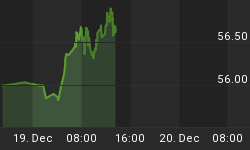About Johnson & Johnson (JNJ): Directly from their website
"Caring for the world, one person at a time...inspires and unites the people of Johnson & Johnson. We embrace research and science - bringing innovative ideas, products and services to advance the health and well-being of people. Our approximately 128,000 employees at more than 250 Johnson & Johnson operating companies work with partners in health care to touch the lives of over a billion people every day, throughout the world."
Earnings Determine Market Price: The following earnings and price correlated F.A.S.T. Graphs™ clearly illustrates the importance of earnings. The Earnings Growth Rate Line or True Worth™ Line (orange line with white triangles) is correlated with the historical stock price line. On graph after graph the lines will move in tandem. If the stock price strays away from the earnings line (over or under), inevitably it will come back to earnings.
Johnson & Johnson: Historical Earnings, Price, Dividends and Normal PE Since 1998

Performance Table Johnson & Johnson
The associated performance results with the earnings and price correlated graph, validates the principles regarding the two components of total return; capital appreciation and dividend income. Dividends are included in the total return calculation and are assumed paid, but not reinvested.
When presented separately like this, the additional rate of return a dividend paying stock produces for shareholders becomes undeniably evident. In addition to the 5% capital appreciation, long-term shareholders of Johnson & Johnson, assuming an initial investment of $100,000, would have received an additional $53,433.60 in dividends that increased their total return from 5% to 6.7% per annum versus 3.6% in the S&P 500.

The following graph plots the historically normal PE ratio (the dark blue line) correlated with 10-year Treasury note interest. Notice that the current price earnings ratio on this quality company is as low as it has been since 1998.

A further indication of valuation can be seen by examining a company's current price to sales ratio relative to its historical price to sales ratio. The current price to sales ratio for Johnson & Johnson is 2.85 which is historically low.

Looking to the Future
Extensive research has provided a preponderance of conclusive evidence that future long-term returns are a function of two critical determinants:
- The rate of change (growth rate) of the company's earnings
- The price or valuation you pay to buy those earnings
Forecasting future earnings growth, bought at sound valuations, is the key to safe, sound, and profitable performance.
The Estimated Earnings and Return Calculator Tool is a simple yet powerful resource that empowers the user to calculate and run various investing scenarios that generate precise rate of return potentialities. Thinking the investment through to its logical conclusion is an important component towards making sound and prudent commonsense investing decisions.
The consensus of 26 leading analysts reporting to Capital IQ forecast Johnson & Johnson's long-term earnings growth at 6.1%. Johnson & Johnson has low long-term debt at 19% of capital. Johnson & Johnson is currently trading at a P/E of 13.3, which is inside the value corridor (defined by the five orange lines) of a maximum P/E of 18. If the earnings materialize as forecast, Johnson & Johnson's True Worth™ valuation would be $103.79 at the end of 2017, which would be an 11.3% annual rate of return from the current price.

Earnings Yield Estimates
Discounted Future Cash Flows: All companies derive their value from the future cash flows (earnings) they are capable of generating for their stakeholders over time. Therefore, because Earnings Determine Market Price in the long run, we expect the future earnings of a company to justify the price we pay.
Since all investments potentially compete with all other investments, it is useful to compare investing in any prospective company to that of a comparable investment in low risk Treasury bonds. Comparing an investment in Johnson & Johnson to an equal investment in 10 year Treasury bonds, illustrates that Johnson & Johnson's expected earnings would be 7.3 times that of the 10 Year T-Bond Interest. (See EYE chart below). This is the essence of the importance of proper valuation as a critical investing component.

Summary & Conclusions
This report presented essential "fundamentals at a glance" illustrating the past and present valuation based on earnings achievements as reported. Future forecasts for earnings growth are based on the consensus of leading analysts. Although, with just a quick glance you can know a lot about the company, it's imperative that the reader conducts their own due diligence in order to validate whether the consensus estimates seem reasonable or not.
Disclosure: Long JNJ at the time of writing.















